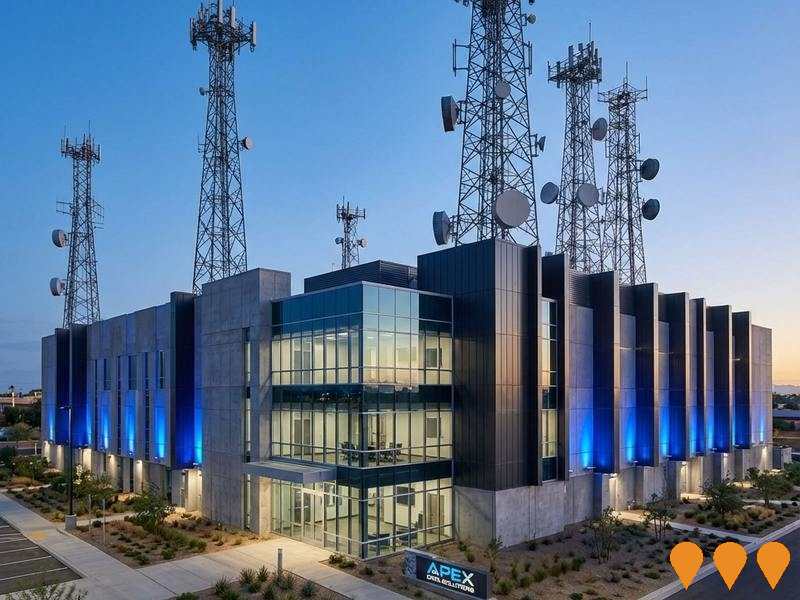Chart Color Schemes
est. as @ -- *
ABS ERP | -- people | --
2021 Census | -- people
Sales Activity
Curious about local property values? Filter the chart to assess the volume and appreciation (including resales) trends and regional comparisons, or scroll to the map below view this information at an individual property level.
Find a Recent Sale
Sales Detail
Population
Bombala is positioned among the lower quartile of areas assessed nationally for population growth based on AreaSearch's assessment of recent, and medium term trends
Bombala's population is approximately 2,515 as of August 2025. This figure represents an increase of 61 people since the 2021 Census, which recorded a population of 2,454. The change is inferred from the estimated resident population of 2,469 in June 2024 and an additional 35 validated new addresses since the Census date. This results in a population density ratio of 0.60 persons per square kilometer. Bombala's growth rate of 2.5% since the census is within 1.9 percentage points of the SA3 area (4.4%), indicating competitive growth fundamentals. Interstate migration contributed approximately 80.0% of overall population gains during recent periods.
AreaSearch uses ABS/Geoscience Australia projections for each SA2 area, released in 2024 with a base year of 2022. For areas not covered by this data, AreaSearch utilises NSW State Government's SA2 level projections, released in 2022 with a base year of 2021. Growth rates by age group from these aggregations are applied to all areas for the years 2032 to 2041. By 2041, based on the latest population numbers, Bombala is expected to increase by 185 persons, recording a gain of approximately 5.5% over the 17-year period.
Frequently Asked Questions - Population
Development
Residential development activity is lower than average in Bombala according to AreaSearch's national comparison of local real estate markets
Bombala has seen approximately nine new homes approved annually. Over the past five financial years, from FY-21 to FY-25, 48 homes were approved, with one more approved in FY-26 so far. On average, 0.4 new residents have arrived per new home each year over these five years.
This indicates that new construction is meeting or exceeding demand, providing buyers with more options and potentially facilitating population growth beyond current expectations. The average expected construction cost value of new dwellings is $490,000. In FY-26, $75,000 in commercial development approvals have been recorded, suggesting a predominantly residential focus. Compared to the rest of NSW, Bombala has about three-quarters the rate of new dwelling approvals per person, but it ranks among the 78th percentile nationally for development activity.
Recent construction comprises 67.0% detached houses and 33.0% medium and high-density housing, with a growing mix of townhouses and apartments offering options across different price points. This shift reflects reduced availability of development sites and addresses changing lifestyle demands and affordability requirements, differing from the current housing mix which is predominantly houses (96.0%). With around 291 people per dwelling approval, Bombala shows characteristics of a low-density area. Future projections estimate that Bombala will add 139 residents by 2041. Based on current development patterns, new housing supply should readily meet demand, offering favorable conditions for buyers and potentially facilitating population growth beyond current projections.
Frequently Asked Questions - Development
Infrastructure
Bombala has limited levels of nearby infrastructure activity, ranking in the 17thth percentile nationally
Changes to local infrastructure significantly affect an area's performance. AreaSearch has identified one major project likely impacting this region: Monaro Highway Safety Upgrades, Snowy 2.0 Pumped Hydro Project, Additional VLocity Trains, and Low and Mid-Rise Housing Policy are key projects, with the following list detailing those most relevant.
Professional plan users can use the search below to filter and access additional projects.
INFRASTRUCTURE SEARCH
 Denotes AI-based impression for illustrative purposes only, not to be taken as definitive under any circumstances. Please follow links and conduct other investigations from the project's source for actual imagery. Developers and project owners wishing us to use original imagery please Contact Us and we will do so.
Denotes AI-based impression for illustrative purposes only, not to be taken as definitive under any circumstances. Please follow links and conduct other investigations from the project's source for actual imagery. Developers and project owners wishing us to use original imagery please Contact Us and we will do so.
Frequently Asked Questions - Infrastructure
Snowy 2.0 Pumped Hydro Project
Snowy 2.0 is a 2,200 MW pumped-hydro expansion of the existing Snowy Mountains Scheme, connecting Tantangara and Talbingo reservoirs via 27 km of tunnels and a new underground power station capable of storing 350 GWh. Major works include three TBMs (Florence, Kirsten, Lady Eileen Hudson), excavation of the underground powerhouse cavern, intake/outlet structures, and new 500 kV transmission connections. As of December 2025, tunnelling is approximately 60% complete, with Florence and Kirsten progressing steadily after earlier soft-ground challenges. Powerhouse excavation is advancing, and first power remains targeted for late 2028 with full commercial operations in 2029.
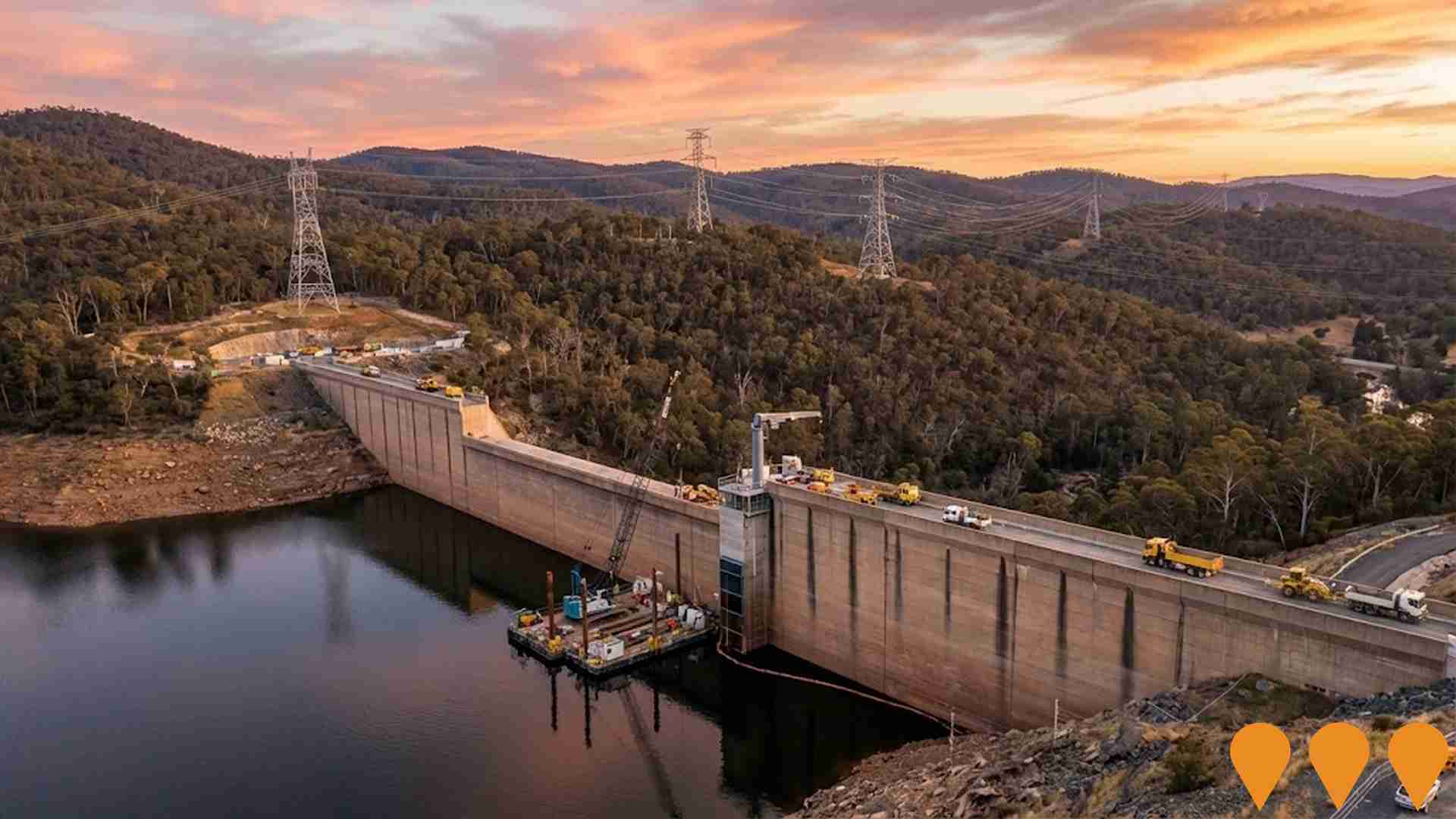
Low and Mid-Rise Housing Policy
State-wide NSW planning reforms via amendments to the State Environmental Planning Policy to enable more diverse low and mid-rise housing (dual occupancies, terraces, townhouses, manor houses and residential flat buildings up to 6 storeys) in well-located areas within 800 m of selected train, metro and light-rail stations and town centres. Stage 1 (dual occupancies in R2 zones statewide) commenced 1 July 2024. Stage 2 (mid-rise apartments, terraces and dual occupancies near stations) commenced 28 February 2025. Expected to facilitate up to 112,000 additional homes over the next five years.
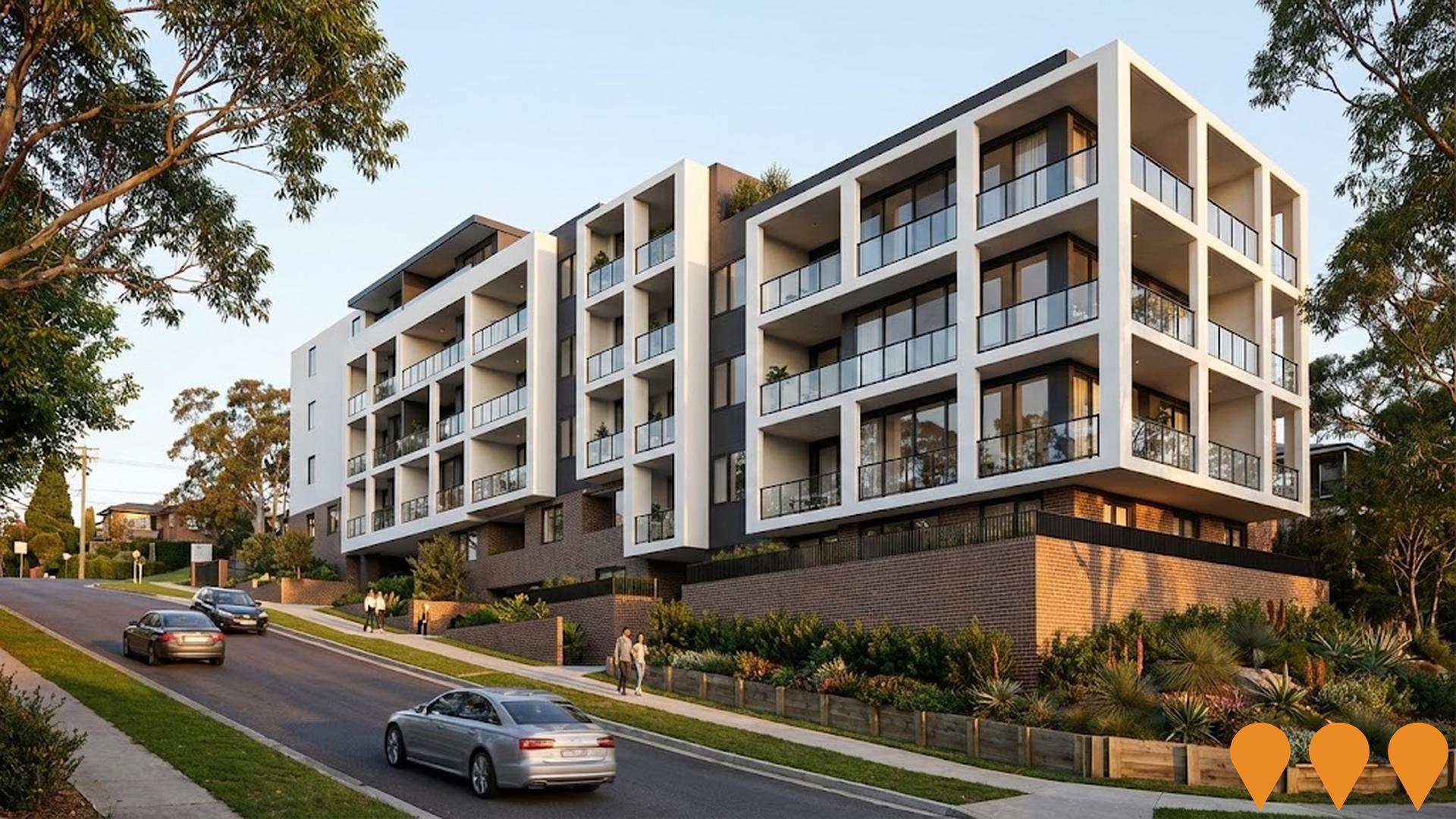
Victorian Renewable Energy Zones
VicGrid, a Victorian Government agency, is coordinating the planning and staged declaration of six proposed onshore Renewable Energy Zones (plus a Gippsland shoreline zone to support offshore wind). The 2025 Victorian Transmission Plan identifies the indicative REZ locations, access limits and the transmission works needed to connect new wind, solar and storage while minimising impacts on communities, Traditional Owners, agriculture and the environment. Each REZ will proceed through a statutory declaration and consultation process before competitive allocation of grid access to projects.
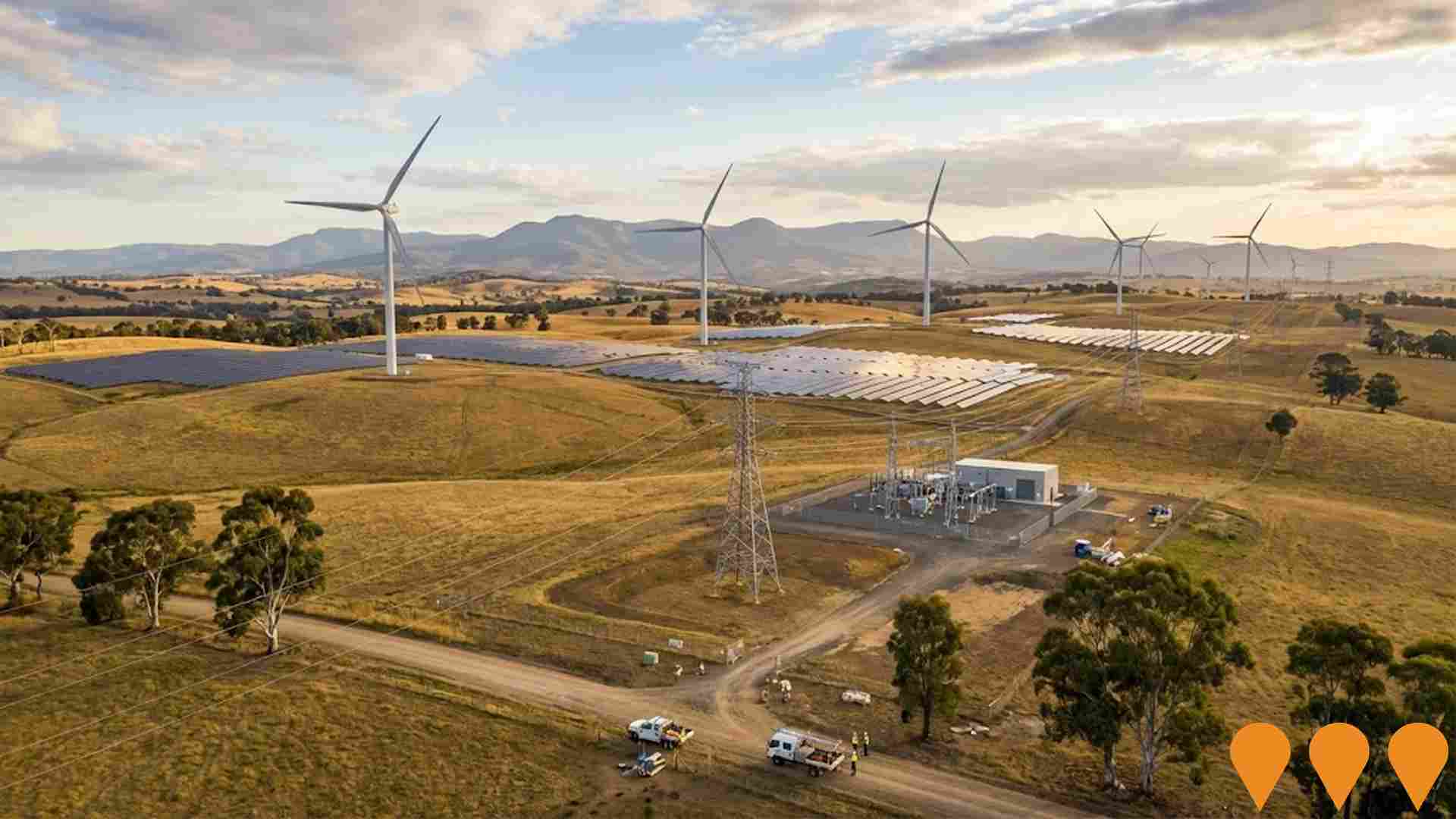
NSW Renewable Energy Zones (REZ) Program
NSW is delivering five Renewable Energy Zones (Central-West Orana, New England, South West, Hunter-Central Coast and Illawarra) to coordinate new wind and solar generation, storage and high-voltage transmission. The program is led by EnergyCo NSW under the Electricity Infrastructure Roadmap. Construction of the first REZ (Central-West Orana) transmission project commenced in June 2025, with staged energisation from 2028. Across the program, NSW targets at least 12 GW of new renewable generation and 2 GW of long-duration storage by 2030.
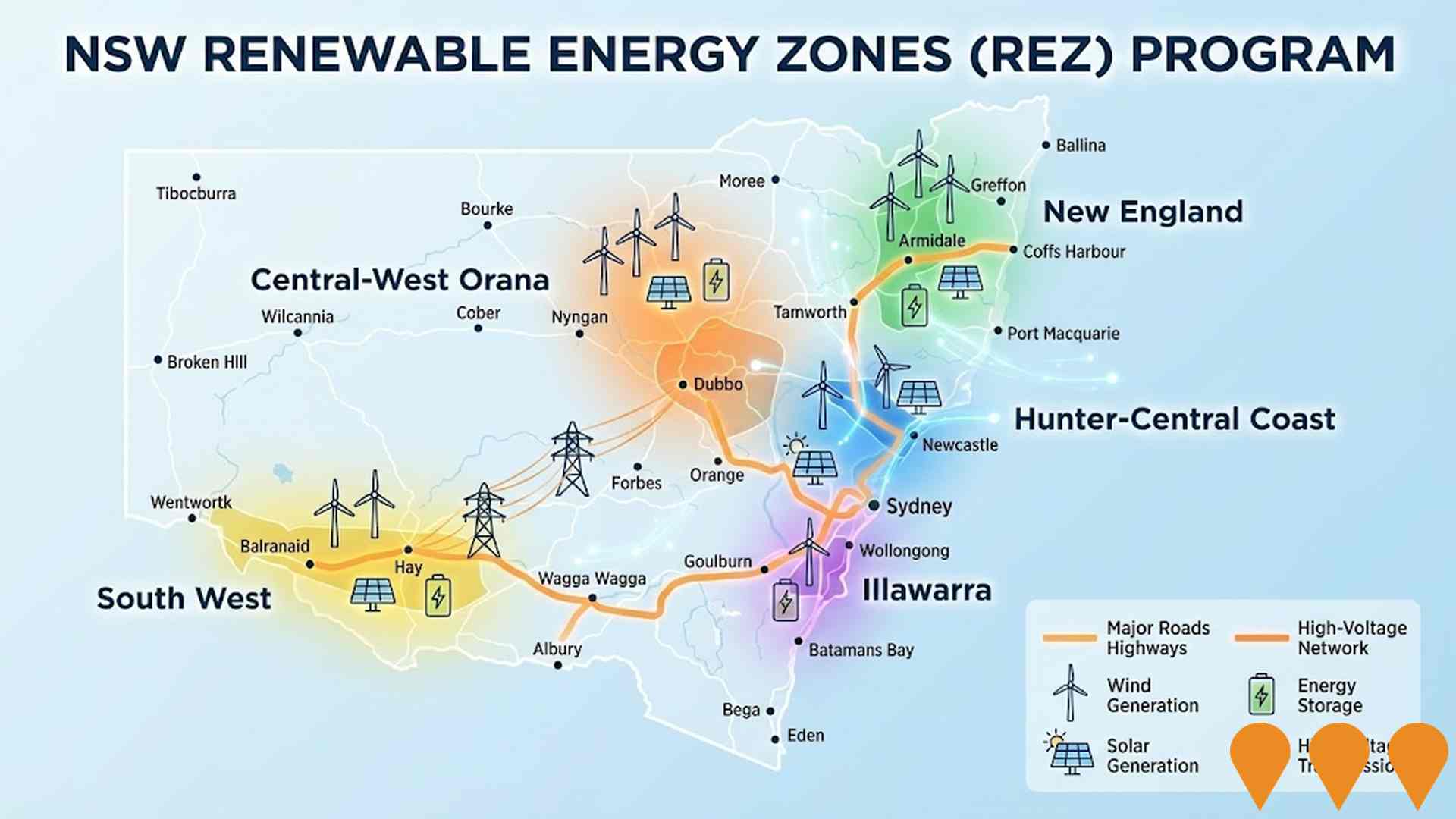
Bulk Water Supply Security
Nationwide program led by the National Water Grid Authority to improve bulk water security and reliability for non-potable and productive uses. Activities include strategic planning, science and business cases, and funding of state and territory projects such as storages, pipelines, dam upgrades, recycled water and efficiency upgrades to build drought resilience and support regional communities, industry and the environment.

Regional Housing Fund (Victoria)
A $1 billion Homes Victoria program delivering around 1,300 new social and affordable homes across at least 30 regional and rural LGAs, using a mix of new builds, purchases in new developments, renewals and refurbishments. Delivery commenced in late 2023 with early completions recorded; overall fund completion is targeted for 2028.

Monaro Highway Safety Upgrades
Transport for NSW is delivering a $20 million program of safety and efficiency upgrades along 205 kilometres of the NSW sections of the Monaro Highway between the ACT border and Victorian border. Works include widened centre lines, widened shoulders, audio-tactile line marking (rumble strips), roadside safety barriers, town gateway treatments at Bredbo, Bombala, Nimmitabel and Cooma, intersection improvements, and speed limit reductions at key locations. The final package commenced north of Bombala in late June 2025, with completion expected by mid-2026, weather permitting. The upgrades target an AusRAP rating of 3-stars or higher, expected to achieve a 60% reduction in fatal and serious injury crashes.

NSW Heavy Vehicle Rest Stops Program (TfNSW)
Statewide Transport for NSW program to increase and upgrade heavy vehicle rest stopping across NSW. Works include minor upgrades under the $11.9m Heavy Vehicle Rest Stop Minor Works Program (e.g. new green reflector sites and amenity/signage improvements), early works on new and upgraded formal rest areas in regional NSW, and planning and site confirmation for a major new dedicated rest area in Western Sydney. The program aims to reduce fatigue, improve safety and productivity on key freight routes, and respond to industry feedback collected since 2022.
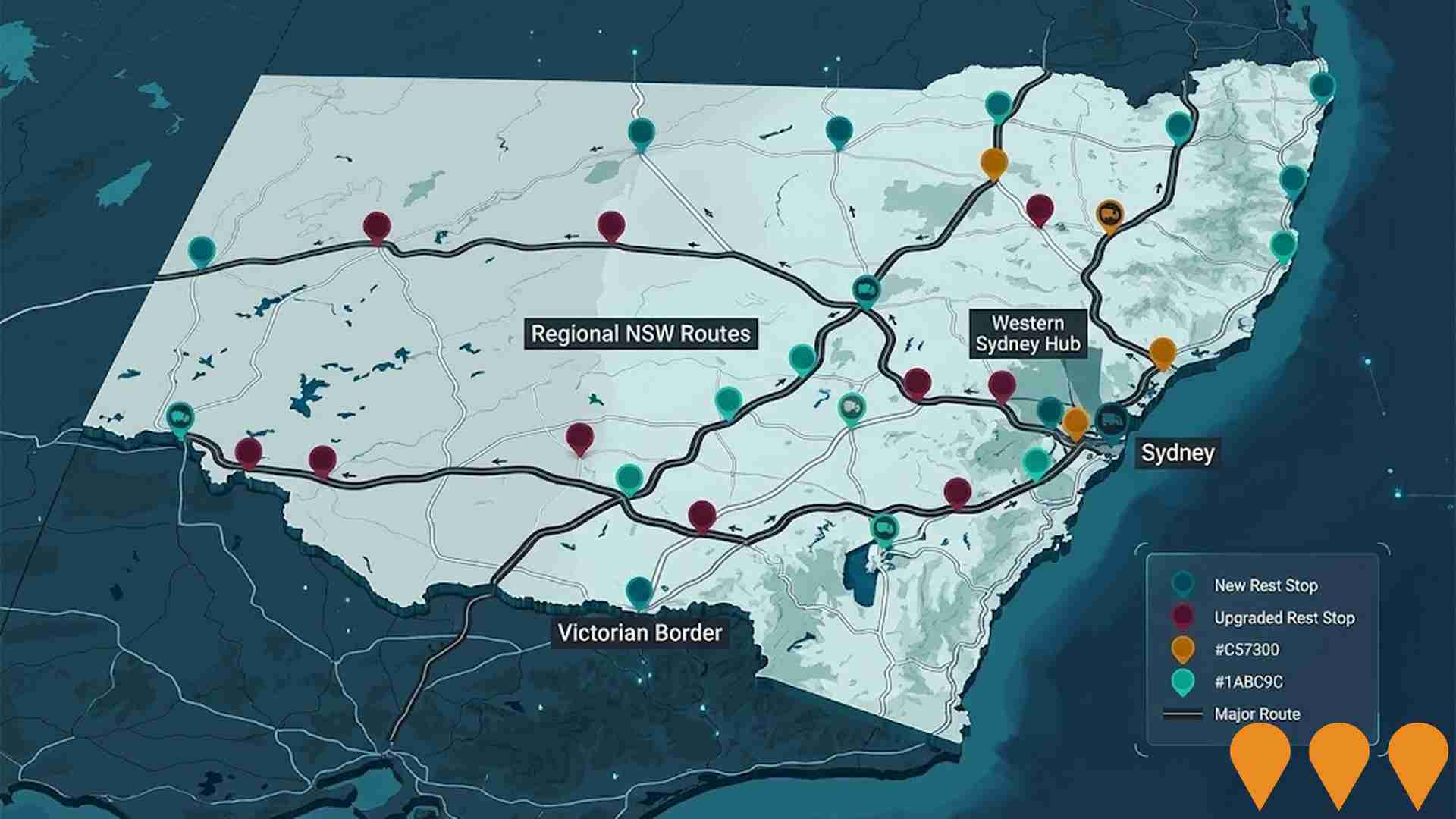
Employment
The employment landscape in Bombala presents a mixed picture: unemployment remains low at 3.6%, yet recent job losses have affected its comparative national standing
Bombala has a balanced workforce with white and blue collar jobs, diverse sectors represented, and an unemployment rate of 3.6% as of June 2025. In this month, 1,238 residents are employed at an unemployment rate matching Rest of NSW's 3.7%, with workforce participation also aligning with the region's 56.4%.
Key employment areas include agriculture, forestry & fishing, manufacturing, and health care & social assistance. The area specialises in agriculture, forestry & fishing with a share 5.8 times the regional level, but has lower representation in health care & social assistance at 9.8% compared to the regional average of 16.9%. Many residents commute elsewhere for work based on Census data analysis. Over the year to June 2025, labour force levels decreased by 3.6%, employment fell by 4.8%, causing unemployment to rise by 1.2 percentage points.
In contrast, Rest of NSW saw an employment decline of 0.1% and labour force growth of 0.3%. Jobs and Skills Australia forecasts national employment growth of 6.6% over five years and 13.7% over ten years. Applying these projections to Bombala's employment mix suggests local growth of approximately 4.6% over five years and 10.7% over ten years, though these are simple extrapolations for illustrative purposes only.
Frequently Asked Questions - Employment
Income
Income figures position the area below 75% of locations analysed nationally by AreaSearch
Bombala's income level is below the national average according to latest ATO data aggregated by AreaSearch for financial year 2022. Bombala's median income among taxpayers is $48,015 and average income stands at $59,312. These figures compare to Rest of NSW's median income of $49,459 and average income of $62,998. Based on Wage Price Index growth of 12.61% since financial year 2022, estimated incomes as of September 2025 would be approximately $54,070 (median) and $66,791 (average). According to 2021 Census figures, household, family and personal incomes in Bombala fall between the 17th and 29th percentiles nationally. Income brackets indicate that the largest segment comprises 27.3% earning $1,500 - $2,999 weekly (686 residents), aligning with broader area where this cohort likewise represents 29.9%. Housing costs are modest with 91.5% of income retained, but total disposable income ranks at just the 26th percentile nationally.
Frequently Asked Questions - Income
Housing
Bombala is characterized by a predominantly suburban housing profile, with above-average rates of outright home ownership
In Bombala, as per the latest Census, 96.4% of dwellings were houses, with the remaining 3.5% being semi-detached homes, apartments, or other types. This contrasts with Non-Metro NSW's figures of 87.0% houses and 13.0% other dwellings. Home ownership in Bombala stood at 53.4%, with mortgaged properties at 27.0% and rented ones at 19.6%. The median monthly mortgage repayment was $1,083, lower than Non-Metro NSW's average of $1,408. Median weekly rent in Bombala was $200, compared to Non-Metro NSW's $300. Nationally, Bombala's mortgage repayments were significantly lower at $1,083 versus Australia's average of $1,863, and rents were substantially below the national figure of $375.
Frequently Asked Questions - Housing
Household Composition
Bombala features high concentrations of lone person households, with a lower-than-average median household size
Family households make up 63.2% of all households, including 20.2% couples with children, 33.7% couples without children, and 8.2% single parent families. Non-family households account for the remaining 36.8%, with lone person households at 34.6% and group households comprising 2.7%. The median household size is 2.2 people, which is smaller than the Rest of NSW average of 2.3.
Frequently Asked Questions - Households
Local Schools & Education
Bombala faces educational challenges, with performance metrics placing it in the bottom quartile of areas assessed nationally
The area's university qualification rate is 16.9%, significantly lower than the NSW average of 32.2%. Bachelor degrees are most common at 12.6%, followed by postgraduate qualifications (2.2%) and graduate diplomas (2.1%). Vocational credentials are prevalent, with 37.1% of residents aged 15+ holding them, including advanced diplomas (8.5%) and certificates (28.6%). Educational participation is high at 27.3%, with 11.8% in primary, 7.9% in secondary, and 2.5% in tertiary education.
Bombala's four schools have a combined enrollment of 351 students. The area has varied educational conditions, with three primary and one secondary school serving different age groups.
Frequently Asked Questions - Education
Schools Detail
Nearby Services & Amenities
Transport
Transport servicing is low compared to other areas nationally based on assessment of service frequency, route connectivity and accessibility
Bombala has 119 active public transport stops offering a mix of train and bus services. These are served by 11 routes that collectively provide 77 weekly passenger trips. Residents enjoy excellent transport accessibility, with an average distance of 186 meters to the nearest stop.
On average, services run 11 times daily across all routes, translating to roughly 0 weekly trips per individual stop.
Frequently Asked Questions - Transport
Transport Stops Detail
Health
Health performance in Bombala is lower than average with common health conditions somewhat prevalent across both younger and older age cohorts
Bombala faces significant health challenges with common health conditions prevalent across both younger and older age cohorts. The rate of private health cover is relatively low at approximately 49% of the total population (~1,234 people), compared to the national average of 55.3%.
The most common medical conditions in the area are arthritis and mental health issues, impacting 12.2 and 6.8% of residents respectively, while 65.0% declared themselves completely clear of medical ailments, compared to 67.2% across Rest of NSW. The area has 28.3% of residents aged 65 and over (710 people), which is higher than the 20.6% in Rest of NSW. Health outcomes among seniors are particularly strong, performing even better than the general population in health metrics.
Frequently Asked Questions - Health
Cultural Diversity
The latest Census data sees Bombala placing among the least culturally diverse areas in the country when compared across a range of language and cultural background related metrics
Bombala's cultural diversity was found to be below average, with 88.5% of its population being citizens, 91.0% born in Australia, and 97.0% speaking English only at home. The predominant religion in Bombala is Christianity, accounting for 65.7% of the population, compared to 51.3% across Rest of NSW. The top three ancestral groups are Australian (34.4%), English (30.9%), and Scottish (9.7%).
Notably, Russian ancestry was overrepresented at 0.6%, compared to 0.3% regionally, while German was at 4.1% (vs 4.0%) and Irish at 9.2% (vs 9.5%).
Frequently Asked Questions - Diversity
Age
Bombala hosts an older demographic, ranking in the top quartile nationwide
Bombala's median age is 48 years, which is significantly older than Rest of NSW's 43 years and the Australian median of 38 years. The age profile shows that those aged 65-74 are particularly prominent at 15.2%, while those aged 15-24 are comparatively smaller at 9.8%. This concentration of 65-74 year-olds is well above the national average of 9.4%. Post-2021 Census data shows that the 25 to 34 age group has grown from 9.6% to 11.0%, and the 75 to 84 cohort has increased from 8.1% to 9.5%. Conversely, the 55 to 64 cohort has declined from 16.1% to 13.9%, and the 5 to 14 age group has dropped from 12.3% to 10.6%. Demographic modeling suggests that Bombala's age profile will evolve significantly by 2041. The 25 to 34 age cohort is projected to grow steadily, expanding by 90 people (33%) from 276 to 367. Senior residents aged 65 and above will drive 53% of population growth, underscoring demographic aging trends. Meanwhile, both the 55 to 64 and 15 to 24 age groups are projected to see reduced numbers.
